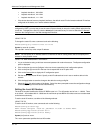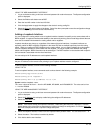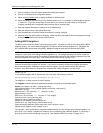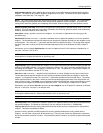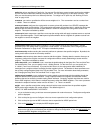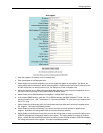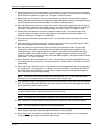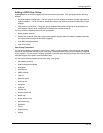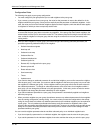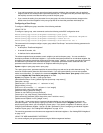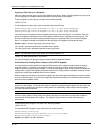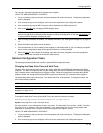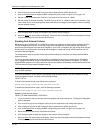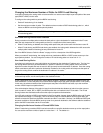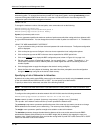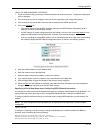
Advanced Configuration and Management Guide
Configuration Rules
The following rules apply to peer group configuration:
• You must configure a peer group before you can add neighbors to the peer group.
• If you remove a parameter from a peer group, the value for that parameter is reset to the default for all the
neighbors within the peer group, unless you have explicitly set that parameter on individual neighbors. In this
case, the value you set on the individual neighbors applies to those neighbors, while the default value applies
to neighbors for which you have not explicitly set the value.
NOTE: If you enter a command to remove the remote AS parameter from a peer group, the software checks
to ensure that the peer group does not contain any neighbors. If the peer group does contain neighbors, the
software does not allow you to remove the remote AS. The software prevents removing the remote AS in this
case so that the neighbors in the peer group that are using the remote AS do not lose connectivity to the
routing switch.
• Once you add a neighbor to a peer group, you cannot configure the following outbound parameters (the
parameters governing outbound traffic) for the neighbor.
• Default-information-originate
• Next-hop-self
• Outbound route map
• Outbound filter list
• Outbound distribute list
• Outbound prefix list
• Remote AS, if configured for the peer group
• Remove private AS
• Route reflector client
• Send community
• Timers
• Update source
If you want to change an outbound parameter for an individual neighbor, you must first remove the neighbor
from the peer group. In this case, you cannot re-add the neighbor to the same peer group, but you can add
the neighbor to a different peer group. All the neighbors within a peer group must have the same values for
the outbound parameters. To change an outbound parameter to the same value for all neighbors within a
peer group, you can change the parameter on a peer-group basis. In this case, you do not need to remove
the neighbors and change the parameter individually for each neighbor.
• If you add an outbound parameter to a peer group, that parameter is automatically applied to all neighbors
within the peer group.
• When you add a neighbor to a peer group, the software removes any outbound parameters for that neighbor
from the running configuration (running-config). As a result, when you save the configuration to the startup-
config file, the file does not contain any outbound parameters for the individual neighbors you have placed in
a peer group. The only outbound parameters the startup-config file contains for neighbors within a peer
group are the parameters associated with the peer group itself. However, the running-config and the startup-
config file can contain individual parameters listed in the previous section as well as the settings for those
parameters within a peer group.
You can override neighbor parameters that do not affect outbound policy on an individual neighbor basis.
• If you do not specify a parameter for an individual neighbor, the neighbor uses the value in the peer group.
• If you set the parameter for the individual neighbor, that value overrides the value you set in the peer group.
10 - 20



